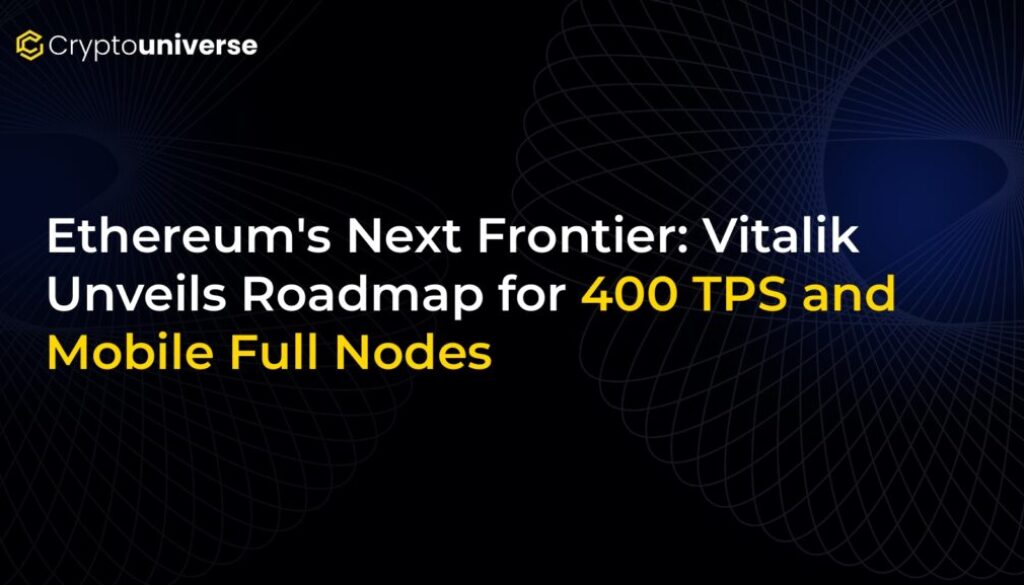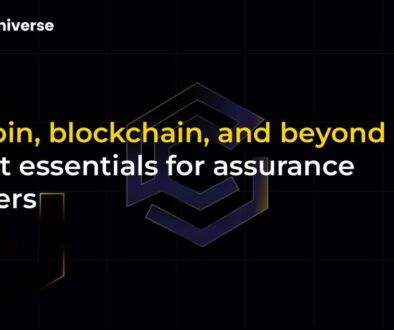Ethereum’s Next Frontier: Vitalik Unveils Roadmap for 400 TPS and Mobile Full Nodes

Ethereum’s Ambitious Future Unveiled at ETHKyiv 2025
In a powerful display of Web3 resilience, developers gathered at ETHKyiv 2025 in Ukraine to push the boundaries of decentralized technology. While the event highlighted the strength of the builder community, the most significant revelations came from remote presentations by Ethereum’s founder, Vitalik Buterin, and core developer Tomasz K. Stańczak. They laid out a groundbreaking roadmap that promises to make Ethereum faster, more scalable, and radically more accessible to the average person.
The two core announcements signal a major evolution for the network: a plan to achieve 400 transactions per second (TPS) on the mainnet and the revolutionary ability for users to run full nodes directly from their smartphones. Let’s break down what these monumental changes mean for the future of Ethereum and the entire crypto ecosystem.
A Full Node in Your Pocket: The Dream of True Decentralization
One of the biggest hurdles to true blockchain decentralization has always been the hardware requirement for running a full node. Full nodes are the backbone of the network; they store the entire blockchain history, validate all transactions and blocks, and enforce the network’s consensus rules. Historically, this has required a powerful computer with significant storage and constant connectivity, limiting participation to a smaller, more technical group of users.
Vitalik Buterin announced a plan to shatter this barrier. He revealed that upcoming advancements will soon allow users to run an Ethereum full node on devices as simple as a smartphone or even a smartwatch.
How is This Possible? The Magic of zkEVMs
The key to this leap lies in zkEVM technology. Standing for Zero-Knowledge Ethereum Virtual Machine, this innovation uses cryptographic proofs (zk-SNARKs) to verify transactions without needing to store the entire blockchain history. In simple terms, a mobile node can mathematically prove that transactions are valid without downloading gigabytes of data. This drastically reduces the hardware and storage footprint, making it feasible for lightweight devices.
The impact of this development is profound:
- Enhanced Decentralization: Lowering the barrier to entry means millions more users can participate in securing the network, making Ethereum more robust and resilient against attacks or censorship.
- Improved Privacy: Running your own node means you don’t have to rely on third-party services to interact with the blockchain, giving you greater control over your data and privacy.
- Greater Accessibility: It fulfills the core Web3 promise of a user-owned internet, where anyone can verify the network’s integrity from the palm of their hand.
As Buterin stated, the goal is to “Make Ethereum private, censorship-resistant, and easy enough for anyone to use daily.” Mobile nodes are a critical step toward that vision.
Need for Speed: Supercharging the Ethereum Mainnet
While decentralization is getting a boost, so is the network’s core performance. Ethereum Foundation developer Tomasz K. Stańczak confirmed an aggressive timeline for major scalability upgrades on the Layer 1 chain.
The headline figure is a target of 400 TPS on Layer 1 by the end of 2025. This represents a massive increase in the network’s native capacity, allowing it to handle a much higher volume of transactions directly on the mainnet. But the upgrades don’t stop there.
Faster Finality and Higher Gas Limits
Stańczak also unveiled two other crucial milestones:
- 3-Slot Finality: Planned for late 2026, this upgrade will slash block confirmation times from the current ~15 minutes to a mere 36 seconds. Finality is the point at which a transaction is considered irreversible. This dramatic reduction will make using dApps feel significantly faster and more responsive, akin to a Web2 experience.
- Increased Block Gas Limit: The gas limit per block will soon increase to 60 million, with a target of 100 million later in the year. A higher gas limit means more computations and transactions can fit into a single block, directly boosting the network’s overall throughput.
These Layer 1 improvements are not meant to replace Layer 2 scaling solutions like Arbitrum or Optimism. Instead, they are designed to strengthen Ethereum’s foundation, making it a more secure, fast, and reliable settlement layer for the entire L2 ecosystem to build upon.
What This Means for the Future of Web3
While short-term market sentiment can be swayed by ETF flows and analyst predictions, it’s these fundamental technological advancements that truly define Ethereum’s long-term trajectory. The combination of radical accessibility through mobile nodes and a massive performance boost on the mainnet sets the stage for the next wave of adoption.
Imagine a future where decentralized applications are not only lightning-fast but where every user can contribute to the network’s security from their phone. This is the future Ethereum is building: one that delivers a seamless, Web2-like user experience without compromising on the core Web3 values of decentralization, security, and user sovereignty. The roadmap for <400 TPS and Mobile Full Nodes> is not just an upgrade; it’s a fundamental reimagining of what a global, decentralized computer can be.


